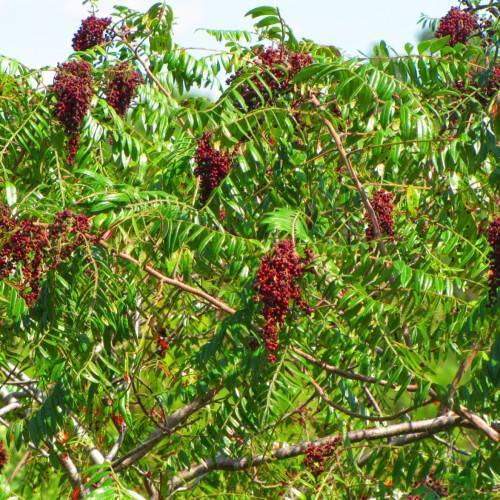
winged sumac
Rhus copallinum
Cycle:
Perennial
Watering:
Minimum
Hardiness Zone:
4 - 9
Flowers:
Flowers
Sun:
Full sun,part shade
Fruits:
Fruits Ready In Fall
Leaf:
Yes
Growth Rate:
High
Maintenance:
Moderate
Drought Tolerant:
Yes
Thorny:
Yes
Care Level:
Medium
watering
Winged sumac (Rhus copallinum) prefers soil that is consistently moist, but not soggy, so it is important to monitor and regulate watering. Water this species 2 or 3 times a week, ensuring that the soil is evenly moist and the leaves are not left wet for prolonged periods. During the spring and summer months, when the plant is actively growing, water more frequently and provide a deep watering as needed. In the fall and winter months, reduce watering to only when the top 2 inches of soil is dry. In periods of sustained heat, be sure to water twice daily. Winged sumac will also require supplemental watering during dry spells.
sunlight
Winged Sumac, or Rhus copallinum, grows best in full sun to partial shade. It can tolerate more shade than some other shrubs, however, it will not produce any flowers or fruit if grown in shady locations. For optimum growth and the best possible flowering and fruiting, this plant species should be grown in full sun for at least 5 hours each day, preferably in the morning. In areas with very hot summers, some afternoon shade may be beneficial. When growing in full sun it is important to provide the plant with moist soil so it can absorb sufficient moisture.
pruning
Winged sumac should be pruned twice each year. In early spring, before the new growth appears, cut back branches that are damaged, dead, or diseased. In the late spring or early summer, cut back any new growth that is growing too vigorously. This helps to keep winged sumac manageable in size and shape. It is important to limit the amount of pruning and use sharp pruning shears to prevent injuring the plant.
